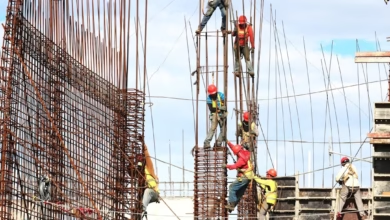Navigating the Future of Metal Recycling: Processes, Market Trends, and Innovations in Sustainable Production

In an age where sustainability and environmental responsibility are at the forefront of global initiatives, metal recycling has emerged as a crucial practice in minimizing waste and promoting sustainable metal production. The processes involved in recycling scrap metals not only contribute to reducing the demand for metal mining but also play a significant role in the circular economy. This article delves into the intricate world of metal recycling, exploring how various metals—ranging from precious metals like gold and platinum to industrial metals such as steel, aluminum, and copper—are transformed from scrap into valuable resources.
As we navigate through the complexities of metal recycling, we will examine the entire recycling process, shedding light on how ferrous and non-ferrous metals are repurposed for use in industries such as construction, aerospace, and automotive. Furthermore, we will analyze current market trends, including the rising interest in rare earth metals and base metals, which are pivotal for technological advancements and energy solutions.
Innovations in metallurgy and the integration of 3D printing technologies are also reshaping the landscape of metal recycling, offering new avenues for efficiency and sustainability. Join us as we uncover the dynamic trends in metal commodities and how the future of metal recycling is being influenced by both environmental considerations and technological breakthroughs.
- 1. The Metal Recycling Process: From Scrap to Sustainable Production
- 2. Exploring Market Trends: Precious Metals, Base Metals, and Rare Earth Metals
- 3. Innovations in Metal Recycling: The Impact of 3D Printing and Metallurgy on Industry Trends
1. The Metal Recycling Process: From Scrap to Sustainable Production
The metal recycling process is a crucial component of sustainable production, transforming scrap metals into valuable resources that can be reused in various industries. This process begins with the collection of scrap metals, which can include both ferrous metals, like steel and iron, and non-ferrous metals, such as aluminum, copper, zinc, and precious metals like gold and silver.
Once collected, the scrap undergoes sorting to separate different types of metals. Advanced technologies and manual labor are employed to ensure that metals are accurately categorized, which is essential because the properties of various metals can significantly differ. For instance, industrial metals and base metals are often repurposed for construction and manufacturing, while rare earth metals are crucial for high-tech applications.
After sorting, the metals are cleaned to remove any impurities, such as metal corrosion or contaminants. This step is particularly important when recycling metals intended for high-precision applications, like aerospace and automotive sectors, where the quality of materials is paramount. The cleaned metals are then shredded into smaller pieces to facilitate melting.
The melting process is where metallurgy plays a vital role. Scrap metals are heated in furnaces, and as they liquefy, they can be mixed to form metal alloys tailored for specific uses. For instance, aluminum and copper can be alloyed to create materials suitable for automotive and construction applications. This melting phase also contributes to energy savings compared to traditional metal mining, making metal recycling a more environmentally friendly option.
Once melted, the metals are cast into new forms, ready for metal fabrication. The recycled metals can be used to create a wide array of products, from construction metals to jewelry metals, and even battery metals for electric vehicles. This closed-loop system not only reduces the need for virgin materials but also mitigates the environmental impact associated with metal mining.
As the market trends in metal commodities shift towards sustainability, more industries are investing in metal recycling to meet their material needs. With a growing emphasis on gold investing and silver investing, precious metals recycled from old electronics and jewelry are increasingly being recognized for their value. Additionally, advancements in 3D printing metals are enabling manufacturers to produce intricate components from recycled materials, further reinforcing the importance of sustainable metal production.
In conclusion, the metal recycling process is integral to maintaining a sustainable economy, allowing us to conserve resources while minimizing waste. By embracing metal recycling, we can ensure a steady supply of materials, support the growth of the green economy, and contribute to the reduction of environmental impacts associated with metal production.
2. Exploring Market Trends: Precious Metals, Base Metals, and Rare Earth Metals
The landscape of metal recycling is continually evolving, influenced by various market trends across different categories of metals. Understanding these trends is vital for stakeholders in the industry, including investors, manufacturers, and environmental advocates.
Precious metals such as gold, silver, platinum, and palladium have always attracted significant attention, particularly in the context of gold investing and silver investing. The demand for these metals is primarily driven by their use in jewelry and electronics, as well as their value as investment commodities. The recycling rates for precious metals are relatively high, thanks to advanced metallurgy processes that allow for efficient recovery from scrap materials. As the global economy shifts towards sustainable metal production, the recycling of precious metals is expected to grow, ensuring that these valuable resources are utilized more efficiently.
On the other hand, base metals like aluminum, copper, zinc, and steel play a critical role in the construction and automotive industries. The trend towards sustainable practices and the circular economy is pushing more industries to adopt metal recycling for these materials. As construction metals and automotive metals are increasingly recycled, the market is witnessing a rise in the use of metal alloys that incorporate recycled content. This not only reduces the demand for new metal mining but also minimizes metal corrosion and enhances the sustainability of metal fabrication processes.
Rare earth metals, although less familiar to the general public, are gaining traction due to their indispensable role in modern technology, particularly in renewable energy and electronics. These metals are crucial for battery metals used in electric vehicles and energy storage systems. As demand for electric vehicles increases and the push for energy-efficient technologies continues, the recycling of rare earth metals becomes essential to meet production needs without depleting natural resources.
Moreover, the rise of 3D printing metals is transforming how industries approach metal trends. By using recycled metals in additive manufacturing, companies can reduce waste and lower production costs. This innovative approach aligns with the broader shift towards sustainable practices in metallurgy.
In conclusion, the recycling landscape for metals—spanning precious metals, base metals, and rare earth metals—is influenced by both market demand and the growing emphasis on sustainability. As industries adapt to these trends, stakeholders must remain informed about the evolving market dynamics that shape the future of metal recycling and its role in a sustainable economy.
3. Innovations in Metal Recycling: The Impact of 3D Printing and Metallurgy on Industry Trends
The landscape of metal recycling is undergoing significant transformation due to innovations in 3D printing and advancements in metallurgy. These technologies are reshaping the way industries approach metal production, recycling, and utilization, leading to more sustainable practices and enhanced efficiency.
3D printing metals have emerged as a game-changer in the manufacturing process, particularly for sectors such as aerospace, automotive, and construction. This additive manufacturing technology allows for the creation of complex metal components using materials like aluminum, steel, and titanium. As a result, manufacturers can minimize waste, as 3D printing uses only the necessary amount of metal, significantly reducing scrap generation. This process not only conserves precious resources but also facilitates the recycling of industrial metals, allowing for the incorporation of recycled materials into new products.
Furthermore, advancements in metallurgy are enhancing the recycling processes for both ferrous and non-ferrous metals. Innovations in metal alloys are leading to the development of stronger, lighter materials that can withstand demanding applications, such as those found in the aerospace and automotive industries. For instance, the use of lithium in battery metals is becoming increasingly prominent as electric vehicles gain traction, driving demand for sustainable metal production techniques.
The focus on rare earth metals and precious metals, such as platinum and palladium, is also shaping metal trends. As these metals are often used in high-tech applications and jewelry, their recycling becomes increasingly important to ensure a steady supply while minimizing the environmental impact of metal mining. The ability to effectively recycle base metals like copper and zinc is vital for meeting global demand and supporting sustainable practices.
In summary, the integration of 3D printing and advancements in metallurgy is significantly influencing the metal recycling industry. These innovations are not only enhancing the efficiency of metal fabrication but are also promoting sustainable practices that are crucial for the future of metal commodities. As industries continue to embrace these technologies, we can expect to see a positive impact on the recycling of metals, contributing to a more sustainable and resource-efficient economy.
In conclusion, the metal recycling industry is at the forefront of sustainable practices, transforming scrap into valuable resources while adapting to evolving market trends. As highlighted, the metal recycling process plays a crucial role in reducing the demand for metal mining and ensuring the sustainable production of essential materials. The increasing focus on precious metals like gold and platinum, alongside base metals such as aluminum and copper, reflects a growing awareness of the economic and environmental benefits of recycling.
Innovations in metallurgy and 3D printing are revolutionizing how we perceive and utilize metals, paving the way for enhanced metal fabrication techniques that cater to diverse sectors, including construction, aerospace, and automotive industries. The rise of battery metals, energy metals, and refractory metals further emphasizes the importance of recycling in meeting the demands of modern technologies and renewable energy solutions.
As we navigate the complexities of metal trends, it's clear that engaging in metal recycling not only supports the economy but also contributes to a more sustainable future. Investors looking into gold investing or silver investing should consider the vital role that recycled metals play in the market. By embracing metal recycling, we can ensure a continuous supply of industrial metals, reduce metal corrosion, and mitigate the impact on our environment, ultimately leading to a more sustainable and resilient economy.
References:
(Ensure to include your sources here)





